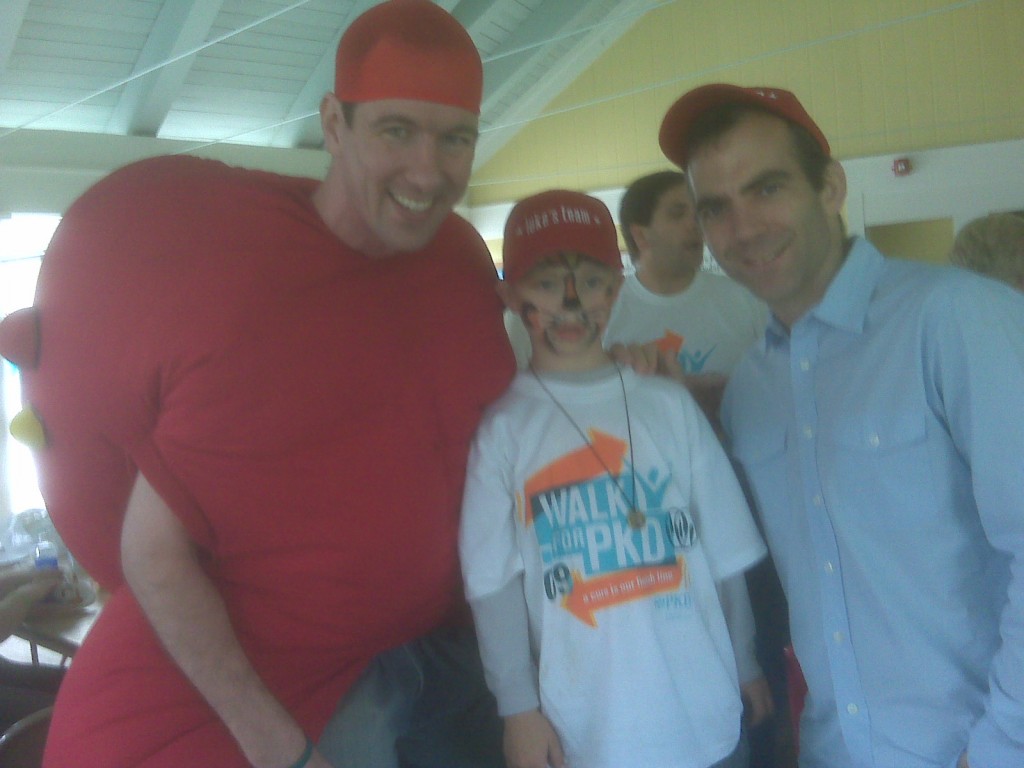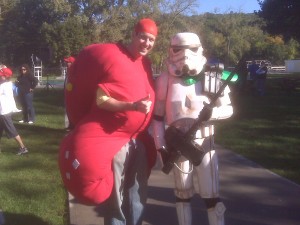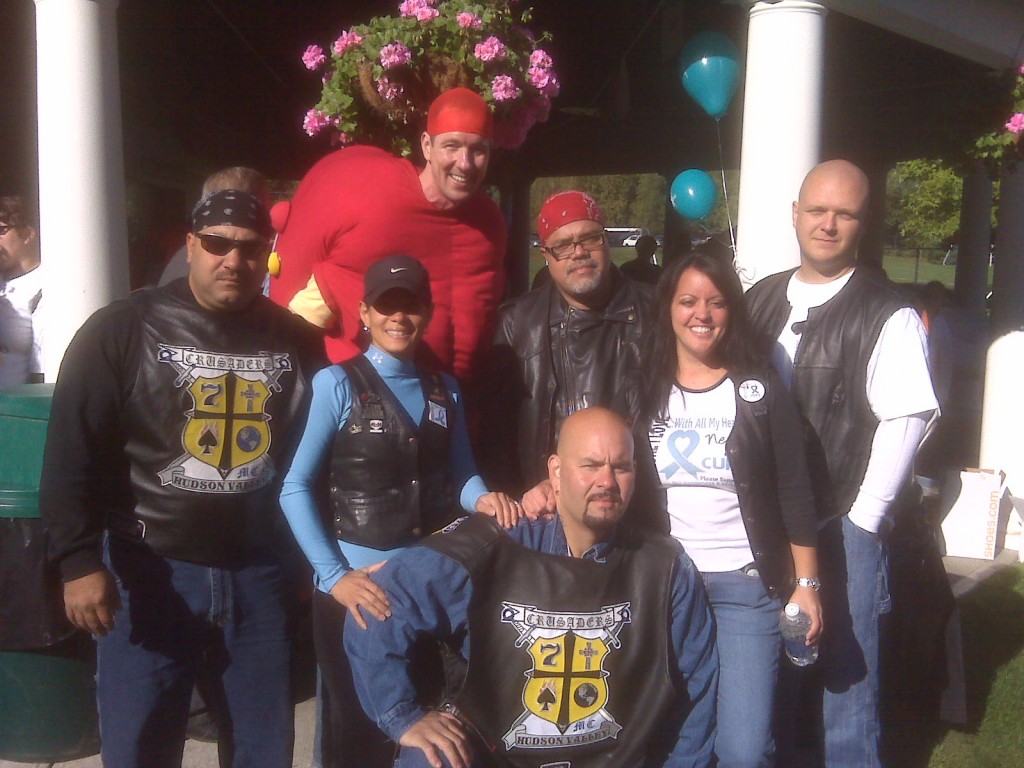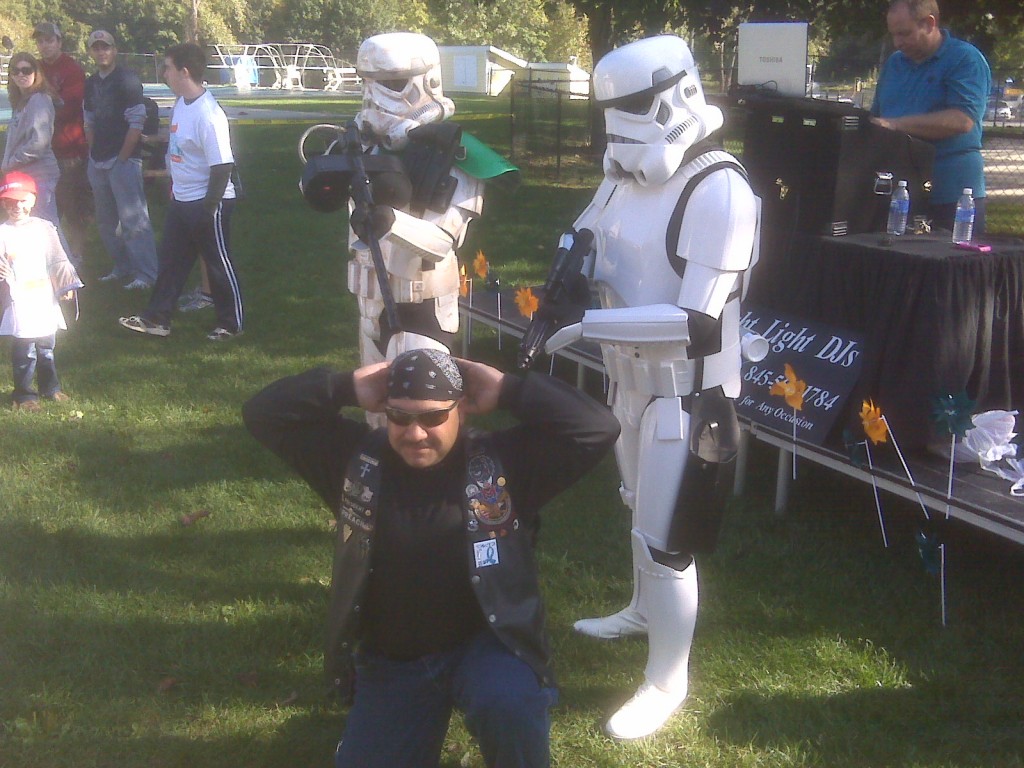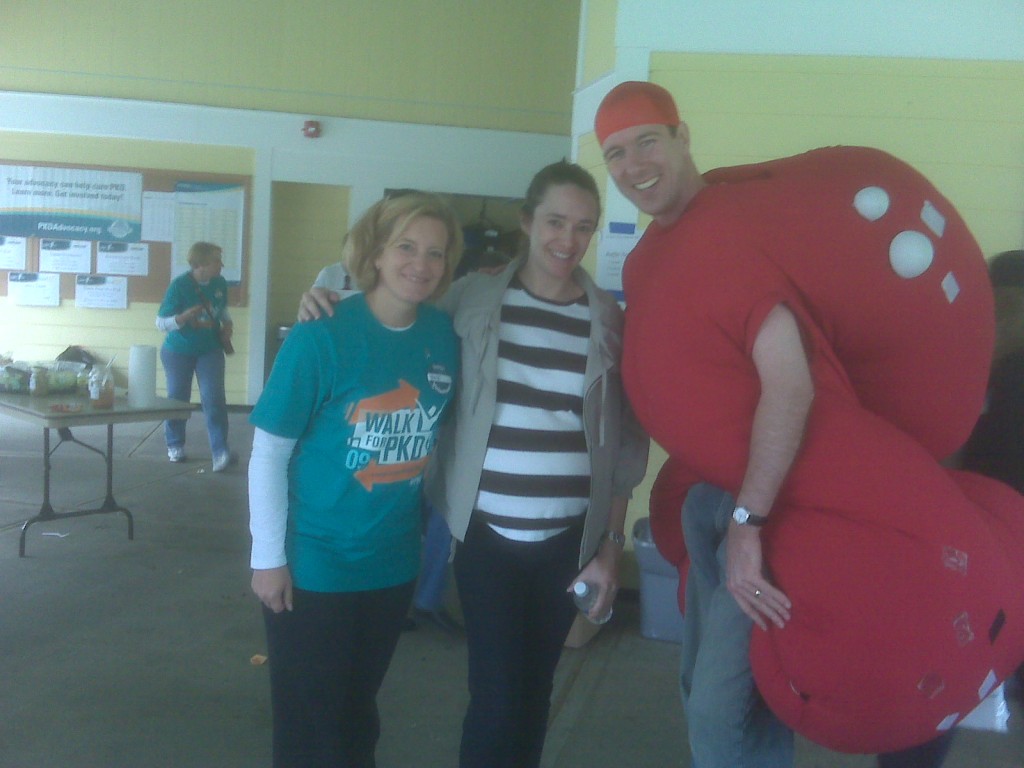There’s been a flurry of very kind coverage lately of my quest to help cure PKD. Here are a few highlights:
** Kim Carollo wrote a great story that ran on the homepage of ABCnews.com.
** For the second year in a row, Andrew Galasetti invited me to write a guest post about PKD for Lyved.
** Merlyn Seeley and Diane Ursu of Examiner.com each wrote very nice stories about PKD and me; I’ve linked their stories to their names.
** And in much more important news, another molecular compound was found to have great potential for treating PKD. Pioglitazone is already approved for the treatment of diabetes, which means the path to testing it in humans should be shorter than if it were a brand-new compound.
So we’ve had a great couple of months. On October 9th I brought my manager’s wife and daughter, Victoria and Genevieve, to the Connecticut Walk for PKD, where we met a number of wonderful people, including the dynamic coordinator Jaime Lazarus and a rugby player who told us that when he needed a kidney transplant, he told his team, and received more than 20 serious offers within a week. He ended up matching with a teammate, who went ahead with the donation. I also met Kristen Neary, the leader of Helen’s Team. Kristen lost her infant daughter, Helen Grace, to ARPKD in 2002, and Helen’s Team walks every year to fight the disease that took her away. This year alone, Helen’s Team raised more than $9,500 to fight PKD. Some people just plain rock.
On October 23rd my manager was in Chicago for a PKD Foundation board meeting, but he flew back that night so we could all be ready for the TriState Walk for PKD. It was a gorgeous day. I met a young woman named Abby who played pro basketball in Australia and Sweden and now lives in southern New Jersey. She saw the article about me in ABC News, passed it around her family, and traveled up for the Walk, determined to do more to fight the disease that has debilitated her relatives the way it has mine. I also saw a bunch of old friends there — Louis Collier and his wife Maria, Richard Roth, Matthew Fulgieri, Robin Strachan, Rich Mauch, Florence O’Berg, and many, many more.
I was particularly honored to meet Kristin Krittman, whose daughter Brooke, born with ARPKD, died just three hours after being born. Kristin and her husband decided to help make sure future parents won’t have to go through the pain they endured, and their team, Brooke’s Bunch, has raised more than $16,000 so far.
If you ever start to forget why we do these Walks — why it matters to do all we can to cure this disease — just look at this picture of Brooke, and imagine what her life might have been like if we had known what to do to keep her alive. Count all the specialists Julia Roberts has gone to see to help her two kids with ARPKD, Gage and Quinnlin.
For all the Kristen Nearys and Julia Robertses and Kristin Krittmans out there who raise money for this Walk to help future parents, thank you. And to all of my donors over the years, thank you.
Because of you, our future is brighter. And because you know us, our future is part of your own future. So when you help us, you also help yourself. We’re cool with that.
You can still support me through December 31st! Please do!
— Kenny
Filed under cysts, generosity, genetic information, kidney, PKD, Uncategorized | No Comments »
